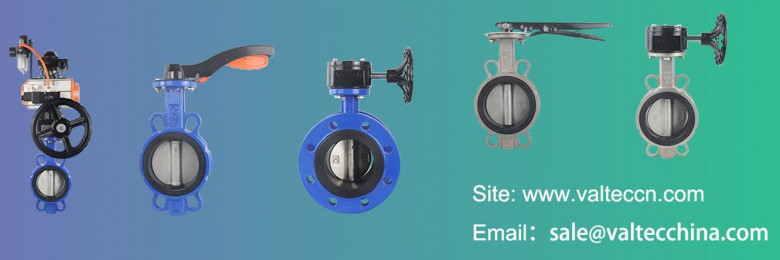views

A butterfly valve regulates or stops the flow of a fluid (isolation and regulation). For low-pressure and non-critical applications, API 609 Centric Butterfly Valves (soft seated) are preferred over gate and ball valves because they are less expensive, lightweight, and easier to install. Eccentric butterfly valves, which include two types, named double offset and triple offset valves with metal seats, have gained popularity and are now competing in some applications with globe and ball valves.
Butterfly Valve:

In many cases, butterfly valves are regulating and shut-off devices that can be used in place of globe and ball valves.
This type of valve can be classified using a number of different factors, including:
- materials like cast iron, high nickel alloys are used for Body and disc
- centric, double eccentric, triple eccentric design
- Types of end connection include wafer, lug (semi or full), flanged and double-flanged seat material: soft (example: Teflon, Buna, rubber, etc.) or metal-to-metal (Stainless Steel 304, Stainless Steel 316)
- Actuation: manually (lever, gear, a worm gear) and actuated (electric, pneumatic, hydraulic, and gas-over-oil types).
Butterfly valves have a wide range of uses, including water supply, treatment of wastewater, fire control, the chemical and oil industries, fuel handling equipment, and power generation industries.
With the emergence of double and triple eccentric designs, butterfly valves are increasingly being utilized in the oil and gas industries and have begun to compete with more traditional valves such as globe and ball valves.
How do butterfly valves do works?
The disc, a metal ring placed at the center of the pipe and attached to an external actuator (manual level or actuator) through a rod, is the main component of a butterfly valve.
Unlike a ball valve, the disc of a butterfly valve is always in direct contact with the substances carried by the pipe, resulting in a pressure drop.
When the disc is closed, it closes the bore of the valve; when it is open, it enables fluid to pass through.
To flip the valve from completely open to fully closed, a quarter-turn movement is required (and such movement can be executed as quickly as for ball valves).
Butterfly Valve standards
API 609, ASME B16.34 (pressure and temperature rating), API 598 (testing), ASME B16.5, ASME B16.47 (flanged ends), and ASME B16.25 specifications define the dimensions and tolerances of butterfly valves used in the petrochemical industries and pipeline applications.
Butterfly Valve Classification Based On Its Design
The first criterion is whether the butterfly valve is concentric or eccentric.
The stem of a concentric butterfly valve is located in the center of the disc, and the disc is placed in the bore of an eccentric butterfly valve (double offset and triple offset) that has one or more stub shafts (stems) that are offset from the center of the valve. Eccentric butterfly valves are often known as double or triple offset valves.
- Concentric Butterfly Valve (Centric)
The concentric butterfly valve is commonly found in water distribution and wastewater treatment plants, fire control systems, and gas supply lines, installations including Filter Installations, Pumping installations, Membrane installations, etc.
- Double Eccentric Butterfly Valve
Double eccentric butterfly valves are widely used in subsurface water supply applications and as compared to gate valves (particularly in larger bore diameters) because they are lighter, less expensive, and require less excavation.
- Triple Eccentric Butterfly Valve
Triple offset butterfly valves are made of high-quality materials such as stainless steel, duplex, and super duplex steel, and they compete with ball valves in
critical applications due to their high temperature and pressure and resistance to corrosion. Triple offset butterfly valves are the most advanced and have gained market share in recent years.












